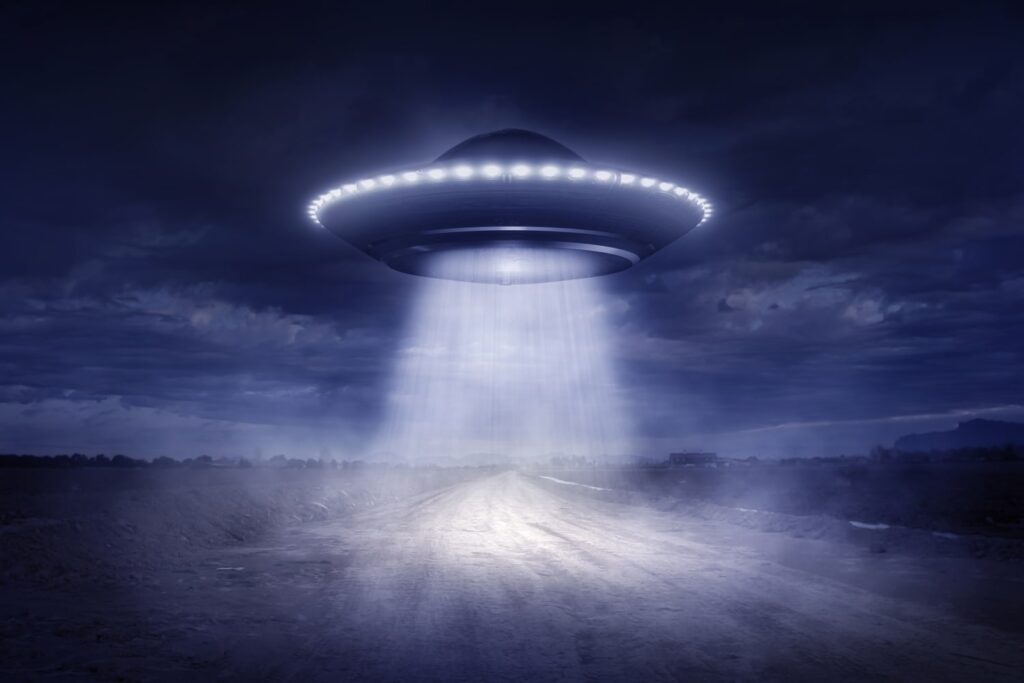1. The History of UFO Sightings
- The Roswell Incident (1947): Perhaps the most famous UFO event, the Roswell Incident, involved a mysterious crash in New Mexico. The U.S. military initially reported recovering a “flying disc,” but later retracted the statement, saying it was a weather balloon. This incident fueled conspiracy theories about government cover-ups and alien life.
- Project Blue Book (1952-1969): The U.S. Air Force conducted this investigation into UFO sightings during the Cold War. While most cases were explained as weather phenomena or man-made objects, a small percentage remained unexplained, keeping the mystery alive.
2. Why UFO Sightings Fascinate Us
Humans have always been intrigued by the unknown, especially the vast, unexplored frontier of space. UFO sightings tap into this fascination for several reasons:
- Exploration of the unknown: The idea that alien life might be visiting Earth is a tantalizing possibility. It challenges our understanding of life and our place in the cosmos.
- Technological curiosity: UFO sightings often describe advanced, seemingly impossible technologies—faster-than-light travel, sudden direction changes, and anti-gravity abilities—that spark our imagination and challenge current scientific limitations.
- Conspiracy theories: Many believe that governments are hiding evidence of alien life, giving rise to a subculture dedicated to uncovering the “truth” about extraterrestrial encounters.
3. Modern Science and UFOs
In recent years, UFO sightings have gained increased attention from scientists and governments alike, leading to a shift in how we approach these phenomena.
- The Pentagon’s UFO Report (2021): In June 2021, the U.S. government released a long-awaited report on “unidentified aerial phenomena” (UAPs), acknowledging that some sightings remain unexplained. This report didn’t confirm the existence of alien life but admitted that certain events defy current understanding of physics and technology.
- Astrobiology: The search for extraterrestrial life has expanded beyond Earth’s atmosphere with missions to Mars, Europa (a moon of Jupiter), and other celestial bodies. Scientists are increasingly optimistic about finding microbial life in our solar system or even discovering signs of distant civilizations through initiatives like SETI (Search for Extraterrestrial Intelligence).
4. Famous UFO Sightings Around the World
- Phoenix Lights (1997): Thousands of people in Arizona and Nevada witnessed a formation of lights moving silently across the sky. Explanations ranged from military flares to alien spacecraft, but to this day, the incident remains a popular case in UFO lore.
- The Rendlesham Forest Incident (1980): Known as “Britain’s Roswell,” this sighting involved military personnel in England who reported seeing strange lights and a metallic object in the woods near a U.S. Air Force base.
- Chile UFO Sighting (2014): The Chilean government released footage of a UFO captured by a military helicopter, which showed an object emitting a mysterious vapor trail. Despite extensive analysis, the object remains unidentified.
5. The Skeptics’ View
Not everyone believes UFO sightings are extraterrestrial in nature. Many skeptics argue that sightings can be explained through more mundane phenomena, such as:
- Atmospheric anomalies: Unusual weather patterns, temperature inversions, or optical illusions can create the appearance of strange lights or objects in the sky.
- Human-made objects: Satellites, drones, experimental aircraft, and space debris often contribute to UFO sightings.
- Psychological factors: The power of suggestion and the human brain’s tendency to recognize patterns (even where none exist) can cause ordinary objects to appear extraordinary.
6. The Future of UFO Research
With growing interest from scientists and governments, the study of UFOs is transitioning from fringe speculation to a legitimate field of inquiry. NASA, the Pentagon, and other organizations are investing in better tools to monitor the skies, while scientists push the boundaries of space exploration in search of life beyond Earth.


Pingback: Space